 |
 |
 |
| |
Multimorbidity in people with HIV using ART in the US: Projections to 2030
|
| |
| |
I asked during the CROI live Q&A session: what are we doing to prepare for this? My answer is nothing! Jules
The largest increase in number of cases of mutimorbidty will be in MSM, the highest increase in prevalence will be in heterosexual women [24%] & men who inject drugs [17%]. See graph below. Women have highest prevalence.

CROI 2021, Conference on Retroviruses and Opportunistic Infections, March 6-10, 2021
Mark Mascolini
More than one third of US residents with HIV will have multimorbidity (2 or more non-HIV comorbidities) by 2030, according to a modeling analysis in a group simulating the 15- to 85-year-old US population treated with antiretroviral therapy (ART) [1]. Researchers predicted greater jumps in comorbidity rates among certain subgroups, including older age cohorts, Hispanic men who inject drugs, and Hispanic women.
With the improved therapies available since the turn of the millennium, the CDC figures that the population of HIV-positive people over age 65 almost doubled from 2013 to 2017, soaring from 53,000 to 92,000. To understand dynamics in this group better, researchers created the PEARL model (ProjEcting Age, multimoRbidity, and poLypharmacy) of people living with HIV and taking ART in the United States in the period 2009-2030 [2]. Modelers aimed to answer two main questions: (1) "What will the age distribution of people with HIV using ART look like in the next decade?" (2) "How big will the multimorbidity burden grow as people using ART age in the next decade?"
Combining 5 gender and HIV acquisition risk groups with 3 races and ethnicities, PEARL has 15 subgroups. The model simulates the US adult population of HIV-positive people 15 to 85 years old who ever started ART. It uses data from the NA-ACCORD cohort collaboration to estimate incidence of major comorbidities in this aging HIV population and projects prevalence of each comorbidity and multimorbidity over time. Considered risk factors and comorbidities (besides HIV) are smoking, body mass index, hepatitis C, anxiety, depression, chronic kidney disease (CKD), hyperlipidemia, diabetes, hypertension, cancer, myocardial infarction (MI), and end-stage liver disease.
PEARL modelers projected that the US ART-using population will jump from about 700,000 today to 928,000 by 2030. In that time median age will climb from 50 to 53 years. One quarter of ART users will be 65 or older in 2030. From 2020 to 2030, the model foresees rising prevalence of anxiety, CKD, depression, diabetes, and MI. Prevalence of hyperlipidemia and hypertension will wane slightly, the model says, while cancer prevalence will climb among male injection drug users.
Defining multimorbidity as having 2 or more physical comorbidities in addition to HIV, the PEARL team determined that 30% of the US HIV population had multimorbidity in 2020. The model projects that fraction will rise to 36% in 2030. Proportions of people with multimorbidity will remain fairly stable from 2010 to 2030 in those under 30 years old, those 30 to 40, and those 40 to 50. But fractions with multimorbidity over those 2 decades will jump in people 50 to 60 years old (representing about one third of that age group in 2030), in people 60 to 70 (about one half of that age group in 2030), and in people 70 or older (about two thirds of that age group in 2030). In the 70-and-over group, projected multimorbidity prevalence will surge from 58% in 2020 to 69% in 2030, reflecting an additional 71,000 people with 2 or more physical comorbidities in 2030.
By HIV acquisition risk, PEARL predicts that the biggest jump in number of people with multimorbidity from 2020 to 2030 will come among men who have sex with men (MSM), with gains spurting from 21,000 additional cases among Hispanic MSM to 34,000 additional cases among black MSM. The model forecasts that Hispanics will endure two of the largest flares in multimorbidity from 2010 to 2030: 17% among men who inject drugs and 24% among heterosexual women.
The researchers forecast a "silver tsunami" in multimorbidity, polypharmacy, and healthcare costs in US residents with HIV [3]. They suggested the US healthcare system will have to adapt quickly to this mounting multimorbidity burden, aiming especially to prevent and manage comorbidities in aging people with HIV.
References
1. Kasaie P, Stewart C, Humes E, et al. Multimorbidity in people with HIV using ART in the US: Projections to 2030. CROI 2021, Conference on Retroviruses and Opportunistic Infections, March 6-10, 2021. Abstract 102.
2. Welcome to the PEARL model. https://pearlhivmodel.org
3. Althoff KN. The silver tsunami: Projecting multimorbidity, polypharmacy, and healthcare costs for those aging with HIV in the US. Grantome. Project No. 5R01AG053100-04. https://grantome.com/grant/NIH/R01-AG053100-04
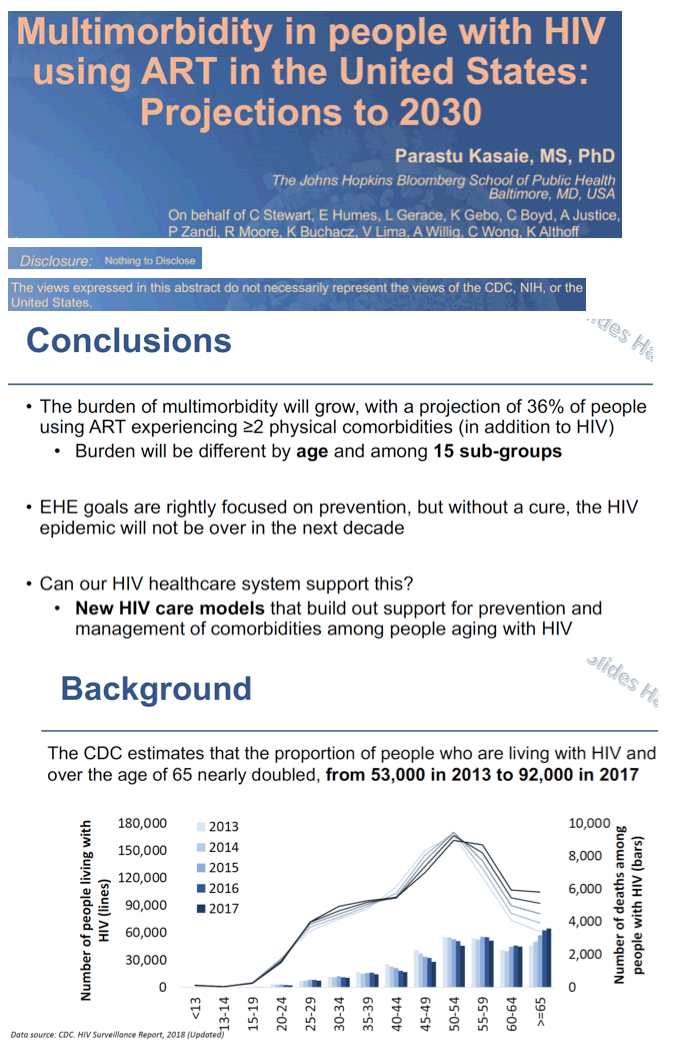
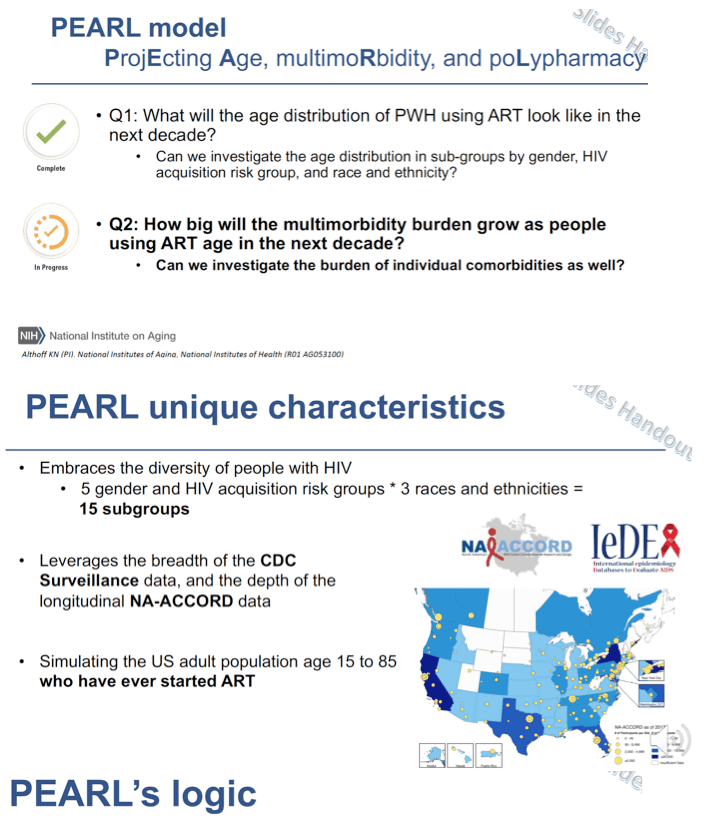
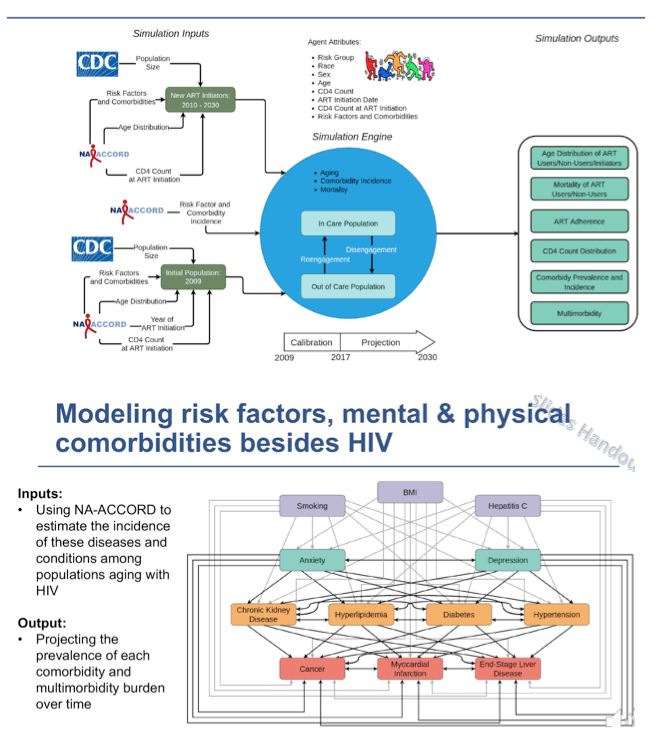
You will note in graph just below projected increased depression, anxiety, myocardial infraction, cancer rates circle in blue for certain groups, increased chronic kidney disease or heterosexual hispanic females, heterosexual white females & IDU black females; and increases in diabetes for many. Jules
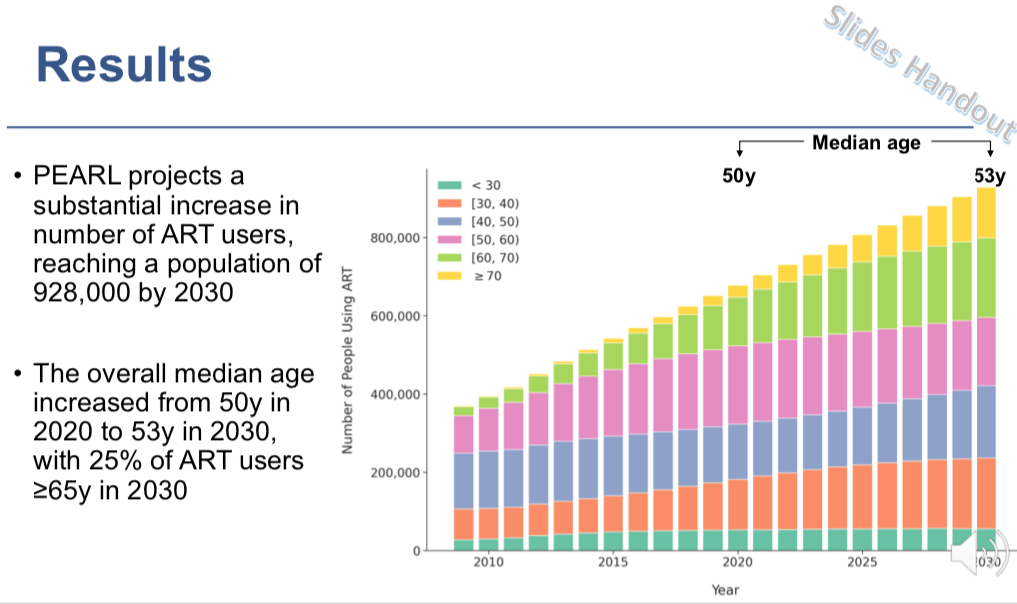
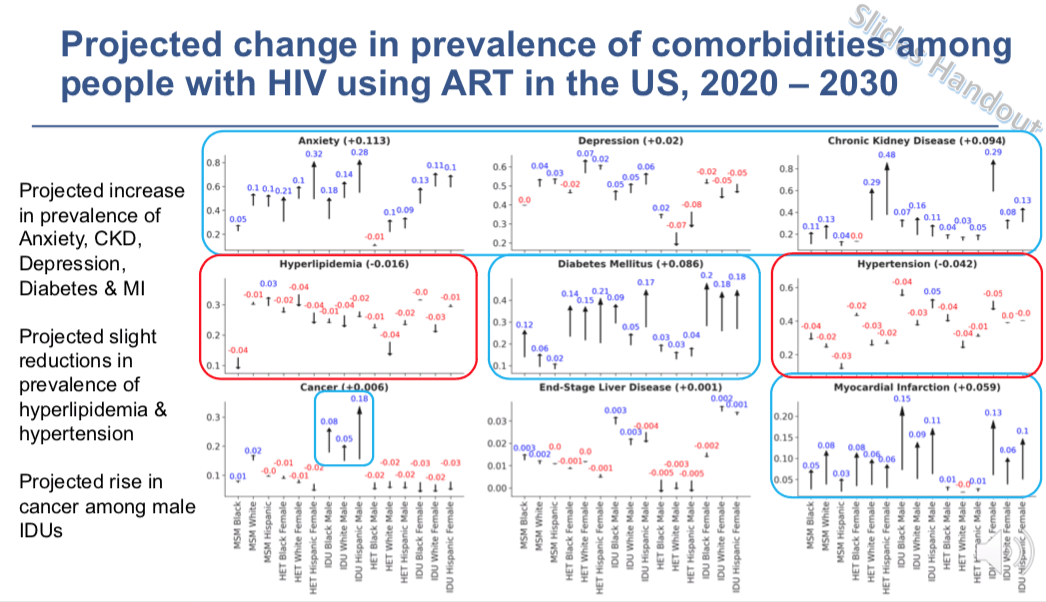
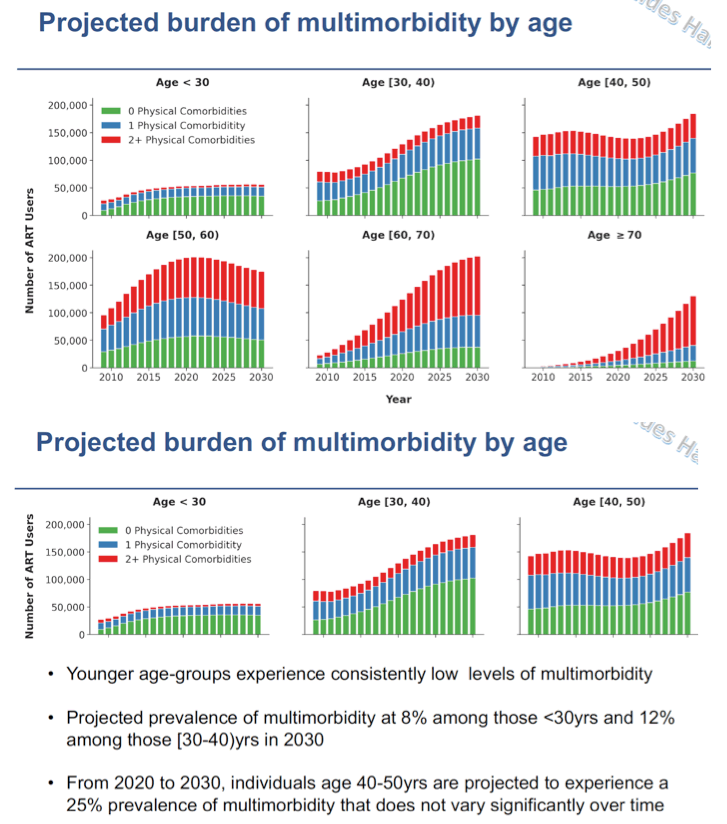
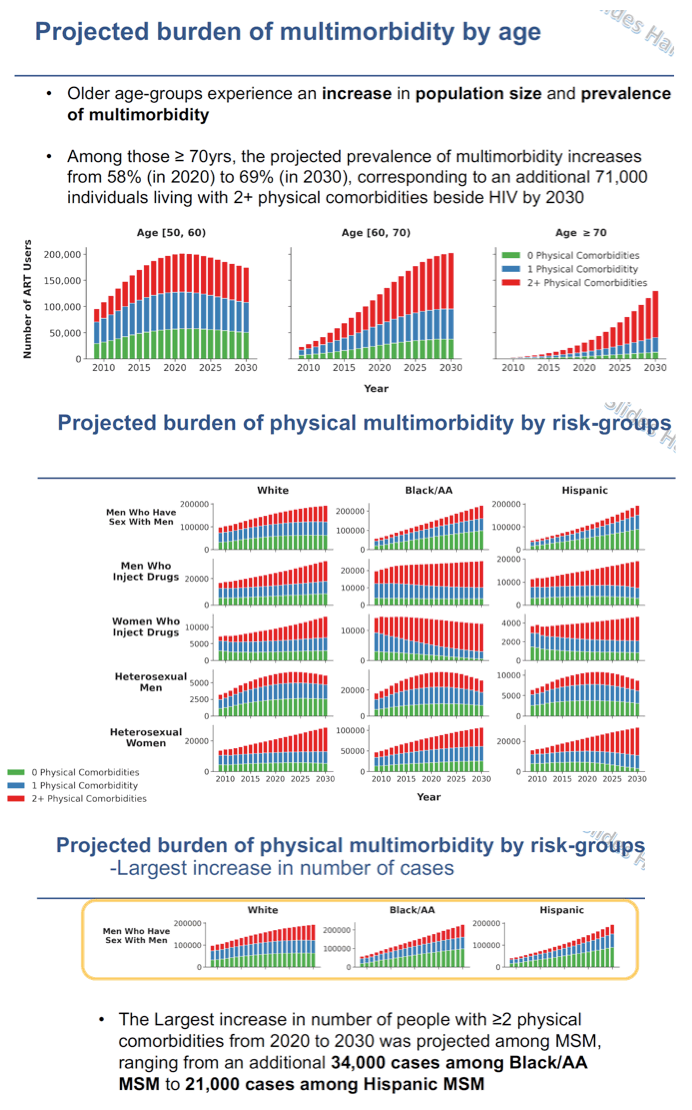
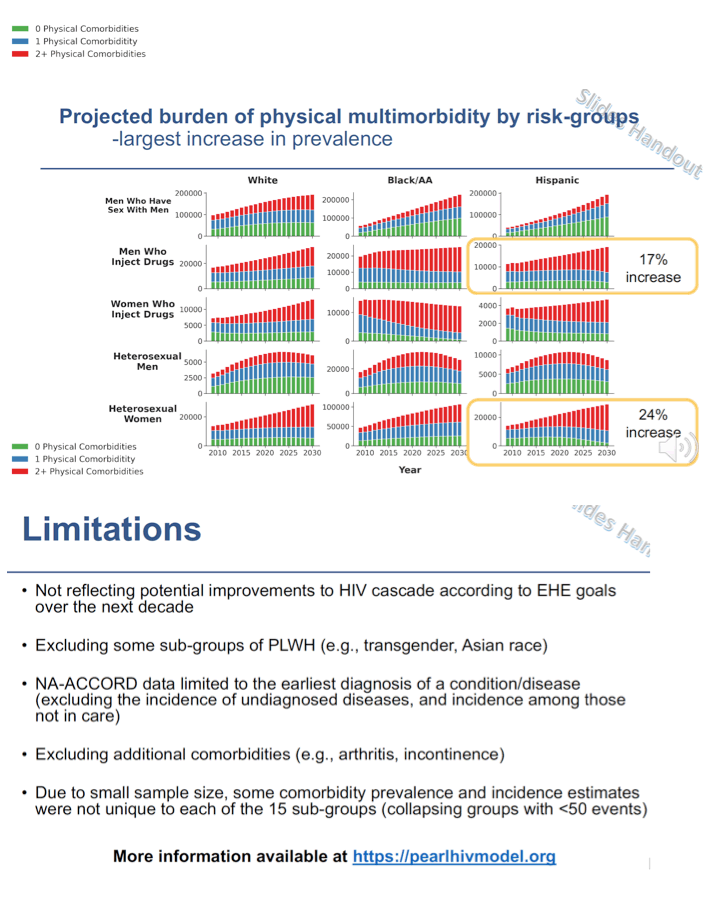
|
| |
|
 |
 |
|
|